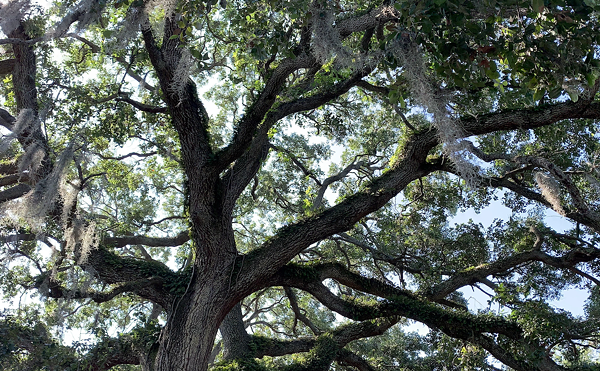Geri embodies eco-friendly chic, co-founding the WareHaus Boutique in Downtown Clearwater, an eco-friendly boutique featuring green pieces, vintage clothes, and treasures from local designers. “We really want to provide an aesthetic and also be nice to our little planet,” says WareHaus co-founder Renee Cornish of the boutique's mission.
Vintage clothes, Geri states, are a simple way to reduce, reuse and recycle clothing. Since there was more quality put into the manufacturing of these older items, vintage pieces often last longer than that cheap, mass-produced blouse from the mall – you know, the one with the stitching falling out after a month and the fabric warping after two washings. And most of the vintage clothing on the market is “timeless” in design, so they won't go out of style next week, giving you more value for your money and ensuring the garment doesn't end up in a landfill.
There are also ethical considerations to buying vintage clothes, or from local designers. The manufacturing of mass-produced items can often be hard to trace, so one can seldom be completely sure the fabric was not made using child labor, or bathed in chemical pesticides and fertilizers by the grower, in the case of some fabrics like cotton.
Most cotton growers pump pesticides into their crops, accounting for 25% of all pesticide use in the U.S., and cotton not being a food-crop, some of the pesticides used are listed among the most toxic and have been linked to cancer. It should be noted that the U.S. has much stricter regulations than other cotton-producing countries, so you can imagine how bad it is out there! Pesticide exposure is worse for the worker than it is for the wearer; 91% of male Indian cotton workers – exposed to pesticides for eight hours a day or more – have experienced some sort of health disorder. These workers are risking their personal well-being to give us our t-shirts, while we risk ours to wear them.
Consumer demand for less costly items has driven manufacturers to the path-of-least-expense, with environmental well-being a secondary concern at best. Unfortunately, such cost-cutting could end up costing us all a lot more in the long run. However, as the green movement gains popularity and consumers become more educated, manufacturers should take notice and adapt their products to consumer tastes, which highlights the importance of voting with your dollar, the best way to get the attention of such enterprises since it hits them where it hurts – on the bottom line.
When purchasing vintage clothing, Geri advises checking the quality of the fabric first. Buttons can be sewed on, musty smells can be removed, and zippers can be replaced, but if the fabric is falling apart, it will never be wearable.
Geri walks-the-walk too, proving that vintage clothing and local designer pieces add to a personal sense of style and individuality, letting us stand out and look fabulous while ensuring the Earth will be useable for future generations of fashionistas. It may seem like a simple and superficial change, but wearing vintage clothes is a little effort that can go a long way.
Geri Aranjo can be reached at [email protected] and her collection of eco-friendly jewelry can be found at lasamara.etsy.com.


















